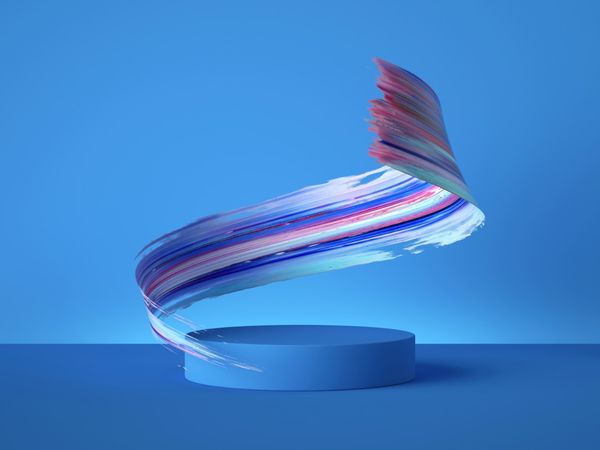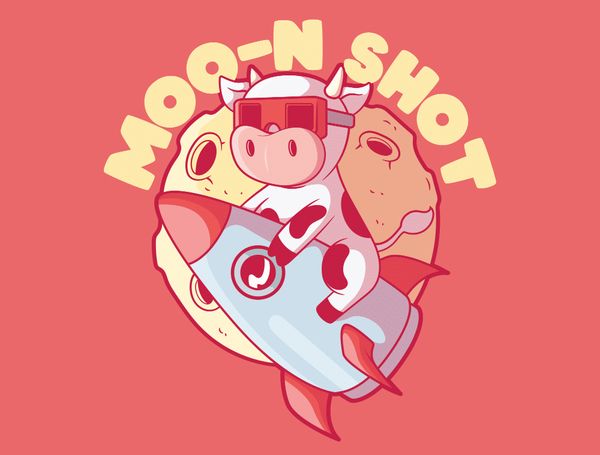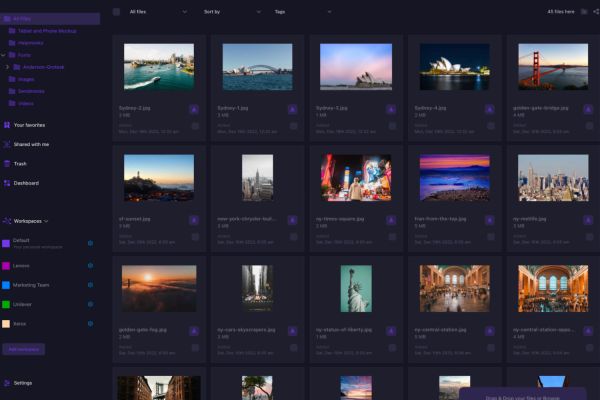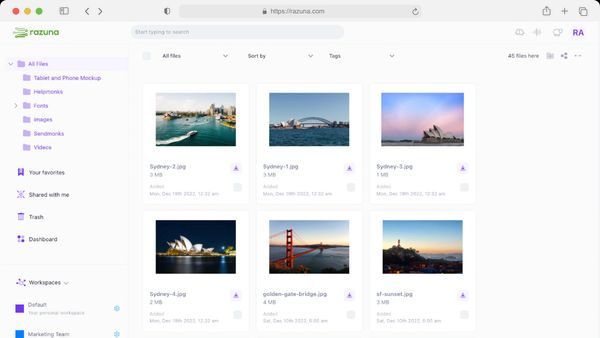
10 Top Enterprise File-Sharing Solutions
Discover the top enterprise file-sharing solutions for secure, efficient collaboration. Learn what to look for in an file-sharing solution and find the best fit.
Read nowHave you heard the term "brand assets" and wondered what it means? Understanding the types of brand assets is essential to brand management.
Documents and resources that merge to create a brand's personality and design are usually called "brand assets." The development of brand recognition and awareness relies heavily on these assets. They are what distinguishes a company and give it personality.
Brand assets enable marketers to connect emotionally with potential customers based on the leads they receive. Brand assets are usually visual, like logos, colors, typefaces, packaging, images, and illustrations.
Non-visual brand assets like the company's tone of voice, brand promise, and mission statement are also options.
Proper management of brand assets is necessary to maintain brand equity. In every marketing channel, all assets must be presented consistently. Following these rules demonstrates authenticity and credibility while also helping to maintain brand consistency.
If you're looking for ways to attract customers to your company, brand assets can help. Keep reading to learn the essentials of brand assets and brand management.
Identifying brand assets will help you with improving brand recognition.
To put it another way, it separates a company, individual, group, or any other entity from its rivals. It also helps the brand to stand out in the market. Because it encompasses everything the company represents and stands for, a brand is the most valuable entity for consumer businesses and even the corporate world.
The best way to think of a brand is as a collection of tangible and intangible components that affect how others perceive and view a company. As consumers interact with your idea or business, the brand grows over time and in different contexts. It also lets you define your target audience and intentionally spend marketing dollars.
It's a good idea to focus on the aspects of your brand. Elements include the following:
The above list contains common examples of brand elements. Still, it may not be all-inclusive of all assets a company utilizes. Audiences must immediately associate these assets with your brand and business to be recognizable.
The characteristics that make a product memorable to customers are more important than the functions of the product. When this aspect of the brand-building strategy is recognized, you've reached a success many businesses will never achieve.
"Distinctive digital assets" are created when those distinctive elements consistently associated with the brand are combined across channels and over time. These are important for any brand because they help people remember the brand. They also encourage customer loyalty which leads to brand advocacy.
Businesses are creating numerous brand assets to remain relevant and connect with audiences worldwide. Choosing which aspects of your company's branding have the greatest value can be challenging. Because of this, brands have developed methods for evaluating the impact and quality of their assets.
Regarding updating or changing their identity, these measures provide brands with invaluable data and point them toward maintaining this identity. When a company plans new advertising, considers introducing new elements or reviving old ones, it is essential to identify the best assets and which ones to improve.
In every business program, a concept is used to hone in on principle. This is a concept defined by the Ehrenberg-Bass Institute for Marketing Science in marketing. This is where the Distinctive Asset Grid originated.
The grid consists of the elements listed under section one that make up your brand identity. It assists businesses in selecting the best assets to represent their brand.
Improving brand recognition focuses on the consumer's needs as a strength of this measure. It believes how well customers remember an asset is the only reliable way to measure the benefits of brand assets.
To determine if an asset is an element, it must meet these two criteria:
Uniqueness is the number of brands linked to a particular feature. At the same time, fame is the number or percentage of consumers who associate the asset with the brand. In essence, the most valuable distinctive assets are not only famous but also one of a kind.

If you consider the brands a consumer is loyal to, the evidence is impossible to ignore. Consider a few easily recognizable brand assets around you, like your favorite coffee shop, product recognition, or athletic shoe brands.
Starbucks' logo was named after a character from the book "Moby-Dick" named "Starbuck." According to the Starbucks website, the logo's purpose is to reference "the seafaring tradition of the early coffee traders."
Although the log has been recreated several times, it has remained loyal to the central theme.
Starbucks seemed to have realized that brand logos were setting precedence as the 20th century ended. Consumers were becoming bombarded with logos. They decided on a graphic design that was bold and simple as a way to get potential customers' attention.
Starbucks' founder Howard Schultz and his leadership team decided to slightly alter the logo to remain faithful to the history of the brand. The siren was cropped closer during the 1992 redesign to focus on her inviting grin and eliminate visual noise.
Similar to the golden arches of McDonald's, Adobe's logo is built around its fonts.
The case of Adobe's logo changing over time is not unusual, as we discussed regarding Starbucks. It's wise for a company to reassess its brand assets as its audiences evolve with current trends.
Adobe now uses a different trademark than in 1982. It's unique and very different from the original logo. The majority of well-known logos adapt to the shifting requirements of their respective businesses.
This was the situation with Adobe, Inc., which has changed its logo four times in the past 38 years. Their font, shape, and color scheme have all changed. Their brand management has been impressive.
The Adobe logo is one of the world's most well-known trademarks. It possesses everything a good logo needs to capture its audience. As a result, there are fewer graphic elements.
The logo gives a modest appearance. To convey a consistent message, the colors, font, and shape must work in harmony.
Brands need time to earn loyalty, a priceless asset. While the trademark has undergone a few modifications, its fundamental principles have not changed. Customers have been loyal because the logo design has remained consistent over time.
When someone exclaims, "Just Do It!" The word Nike should come to mind. That indicates a successful tagline.
Taglines aim to attract new customers and keep your current audience's attention for as long as possible. They are also instantly recognizable as an extension of your brand.
Nike's advertising agency created its tagline in 1988. It's action-oriented and effectively conveys one of Nike's primary messages: giving people the motivation they need to stay active and increase performance.
The distinction in creating a brand-building strategy for a tagline is that it's intended to be a mainstay.
You may be asking if a tagline is the same as a tagline. The answer is no.
Slogans are not made to last longer than a brand's tagline. They change over time, but they still help people remember your company. Slogans are best used to represent a particular product line or marketing campaign.
Here are a few popular Nike slogans:
Nike has multiple endorsement deals and athlete partnerships. A slogan is often created to make those branded gear unique to the famous athlete.
We've discussed successful types of brand assets that have been successful for companies. Now let's explore whether changing a brand's color scheme has the same crossover appeal.
As we've seen, a good logo design has the ability to last. Unfortunately, there are times when the design loses its luster and appeal when it has been around for a very long time. When companies think about redesigning their logos, they often consider why big brands decided to switch things up.
The public is sometimes shocked by the logo change, but it reignites their interest in the brand. Other times the transition is purposeful and subtle, and a loyal customer may think something is different but not give it much thought.
Improving brand recognition and appealing to a younger audience are popular reasons for updating a logo and changing colors. The logo must usually sync perfectly with the brand's other aspects. Here are some good examples of successful brand asset transitions.
In 2018, the US Open celebrated its 50th anniversary. It was the perfect time to reveal their new logo. Not only was the grand slam tournament turning 50, but they're also looking to appeal to younger audiences.
The logo is a simplified, more up-to-date version of the tournament's recognizable flaming ball logo. That log debuted in 1997. The purpose of the new logo is to establish a long-term visual identity for the tournament.
The tennis organization favored a tri-color flat design. The US Open eliminated its previous multicolored metallic logo. Their new branding, which aims to modernize the event, is meant to express its new direction.
Warner Bros., cable show "Animal Planet" also revamped its logo in 2018. The goal was to reflect the global reach of their company better.
The classic green typography was swapped out for a modern blue elephant design over the show's title, now in a lowercase black font. The new logo better reflects the company's international reach.
Last year, Baskin Robbins decided to return to its roots. It changed both its color scheme and fonts.
The new Baskin Robbins logo has a retro look and reduces its synthetic appearance. Despite its nostalgic appeal, the logo most of us have grown to love is now a thing of the past. The company has stated that the new rebrand serves to attract new audiences to the brand.
Baskin Robbins returned to its roots to revitalize itself by reviving the pink and brown used in its initial advertising campaign in 1953.

When someone decides to start a company, they might have a name already in mind. Others spend countless hours looking for inspiration. It won't be until you launch your company and learn more about the brand-building strategy that you'll understand the power of a brand name.
Even when a company has a successful run under a name, there could come a day when the best strategy for improving brand recognition is to change the business name. Some successful companies changed their names to improve their brand assets.
Many people have witnessed the tech company climb to the pinnacle of search engines, and everything related to search engine optimization (SEO). But how many remember the brand's original name was BackRub?
The name Google wasn't the intended rebrand. It came about after a mishap while searching for the availability of the name.
According to Larry Page and Sergey Brin, the cofounders of the search engine, BackRub was the original name. Once the duo moved their operations from the servers at Stanford University, they decided to change the name and eventually decided on Google.
Although Google remains at the forefront as a brand asset, the company changed its name to Alphabet in 2015.
Although it was a straightforward move by KFC to change its name to an abbreviated version, it oddly caused some controversy. False rumors circulated because the change was not explained, such as the chain using genetically modified chickens that could not legally be called chicken.
KFC is a prime example of why it's important to have a brand-building strategy. The last thing you want to do is create negative press. Letting your loyal customers know why the change is necessary will make the transition easier.
In 1927, Southland Ice Company employee John Jefferson Green opened the first 7-Eleven convenience store in Dallas, Texas. The brand started as a makeshift storefront along the docks.
Joe C. Thompson Jr., the founder of Southland Ice Company, decided in 1937 that he liked the concept enough to expand it nationwide. The convenience stores became a reality under the name Tote'm Stores. It wasn't until 1946 that the name changed to 7-Eleven.
The name was based on the store hours of seven days a week from 7 a.m. to 11 p.m. Today, 7-Elevens around the country are open 24 hours a day, every day.
A well-crafted advertisement jingle can evoke feelings of nostalgia and remain in your head for days. They are a great twist to the game, Name That Tune. When it comes to improving brand recognition, a memorable jingle will have consumers singing your song.
Oscar Meyer
Walter Thompson, the largest advertising agency in the nation, held a contest in 1962 to create a jingle that the Oscar Mayer Company could use to promote hot dogs. Richard Trentlage of Chicago won the contest. Released in 1966, "I Wish I Were an Oscar Meyer Weiner" became commercial jingle gold.
The jingle by Trentlage was used in advertisements that reached about 49 million families over time. "The Wiener Song" has aired in 19 countries, been featured on a Hallmark card, and has become ingrained in American pop culture over its lengthy lifespan.
A catchy slogan can project a company's image and keep customers' attention long after the commercial ends. It can also become powerful as a marketing tool when turned into a jingle. For over 50 years, consumers have associated "Like a good neighbor, State Farm is there" with insurance.
The jingle is played at the end of commercials, so even if you aren't watching the TV or a video, you know the ad is for State Farm.
The company has portrayed itself as a company that customers call when they need assistance by positioning itself as a "neighbor." The company has plans to change its brand-building strategy but will keep the jingle.
"Plop, Plop, Fizz, Fizz, Oh What a Relief it Is... " captured the attention of people suffering from bouts of indigestion. The marketing tune is one of Twin Star Music's most well-known commercial jingles. It was composed by Tom Dawes and quickly went viral.
In a well-known 1970s Alka-Seltzer commercial, a diner is seen complaining that he "... can't believe I ate the whole thing!" The thing is an order of spicy meatballs recommended by an insistent waiter.
Alka-Seltzer's popularity skyrocketed. American consumers needed quick solutions to regular bouts of indigestion. The ad and the jingle resonated because they met their demand.
Brand assets touch on your product's packaging because it plays a crucial role. Packaging extends beyond sturdy shipping containers. It also includes creative and appealing designs for shelf display.
Good packaging is necessary for your overall brand strategy. It ensures that your products reach your customers intact and sets your company apart from the competition.
Examples of distinctive product packaging aren't hard to find. Top brands have mastered the art of product packaging. Here are some examples to inspire your designs.
Apple's product packaging is crucial in the tech giant's strategy to increase brand value. They touch on every aspect of their brand-building strategy. All Apple products' packaging and the company's iconic logo use a combination of the colors black, white, and grey to ensure consistency and identity.
The company's 'San Francisco' typeface is used on all product packaging and iOS applications. It ensures the design of Apple's products is instantly recognizable to users and non-users alike.
For electronics, durable cardboard is used for packaging the products, which are then encased in foam or more cardboard.
Customers purchase their products in sleek, minimal boxes that are stark white with black writing and a high-resolution picture of the product inside. Apple gives customers a sense of style and prestige while ensuring familiarity with its products.
The Tiffany blue box is undoubtedly the most well-known packaging in the world. It's been around since the mid-1800s. The iconic box is the ideal retail container, making it more popular than the brand's diamonds.
The box is immediately recognizable due to its distinctive color, typeface, and design. Robin egg blue was carefully selected in light of the period’s fashion and lifestyle trends. The color is now known as Tiffany Blue and is protected by a trademark.
Tiffany's has its own Pantone code of 1837, the year the company was established. The brand also inspired a book, film, and song titled "Breakfast at Tiffany's" due to its popularity in pop culture.
The Amazon box hasn't been around for long, but we probably see it the most daily. With its hashtag and a constant stream of user-generated content, it is one of the most talked-about boxes on social media.
There is no doubt where our friends and neighbors do their online ordering. Even though it doesn't scream luxury like a box from Tiffany's, it's just as powerful in terms of brand assets.
The box design does a good job of summarizing the Amazon brand. It was designed primarily for functionality. A bonus is it has become a well-known item in popular culture, with birthday cakes, animated videos, and comics featuring the box as the protagonist.
We've given you some great examples to get you thinking about the different types of brand assets and their benefits. As you can see, multiple elements are the source of a brand's identity.
Creating a great brand asset for your company is arguably some of your business's most important components. Some will say your brand assets are more crucial to your success than the product.
Today, you can effectively manage your branding assets by utilizing AI in asset management. When creating brand assets, ensure they are organized visually and thematically cohesive.
Your assets are unique. Being the same as everyone else doesn't make anyone shine. Create brand assets that stand out from your rivals and are distinctive to your brand identity.

When you have your brand assets, managing them means making sure they are part of every product and easily accessible to your company. Consistency is vital for each press release, marketing campaign, social media post, signage, and product update.
A brand-building strategy is essential for businesses because it involves creating a distinctive identity for a company’s goods and services. The strategy is designed to help customers become more devoted to the business. Plus, develop an emotional connection to the product or service.
The overall management of a brand is the responsibility of brand management, also known as marketing. Brand management covers the following:
A brand's image or reputation is formed by combining all these factors. Brand management aims to create a solid and favorable brand reputation that will lead to increased sales and market share.
There are significant fundamentals associated with brand management. Members of your marketing team need a comprehensive understanding of the fundamental principles of building a brand strategy.
The reputation of your brand is crucial. Customers must trust the brand to continue using the product or service.
A brand's reputation is essential to its success. It's why consumers make recommendations to family and friends. Plus, people should be drawn in by the positive recognition of your brand name.
KFC is a prime example of why brand reputation is important. Remember, earlier in this article. We touched on the backlash they received when they shortened their name?
An explanation of their rebranding strategy could have avoided some of the negative press.
Brand loyalty and brand reputation go hand-in-hand. Customers who purchase your product solely out of loyalty exhibit brand loyalty. You can build on word-of-mouth advertising to grow your repeat customer population with both.
Fast-food giant Chick-Fil-A has its proponents for various reasons, but consumer loyalty remains strong. Where most fast food establishments are open seven days a week, they remain closed on Sunday. That move in itself has become a strong brand strategy.
Chick-Fil-A prides itself on being a community partner by donating to charities to improve its image. Their workplace values include a wholesome atmosphere with smiling, personable employees.
Although it may be straightforward, brand recognition speaks directly to a company's success. To increase business, you want your brand to be recognized positively by a growing number of individuals.
Brand recognition occurs even when the consumer might not be familiar with your brand but recognizes its products. One example is Adobe Photoshop. People may know that Photoshop is used to edit images but not know it's in the Adobe suite of products.
Check out the top ten recognizable brands in 2022.
In the age of social media, almost anything can damage a brand's reputation. A brand's experience with its customers determines its reputation over time. If you don't handle situations quickly, your brand will suffer, impacting future success.
You've seen us use the term brand-building strategy several times in this article. You may be wondering how you create your brand strategy. Before you delve into brand management, you first need a strategy.
First, you need to be willing to go the extra mile to get the results you expect. Second, originality is key in setting yourself apart from the competition.
Ask yourself, what distinguishes your product from competitors? Why should consumers support your business over competitors?
Does Coke taste better than Pepsi, or is the brand marketing strategy giving one the edge over the other?
Concentrate on your purpose. Use whatever made you fall in love with your brand to support your branding decisions.
Develop a process that allows you to evaluate your marketing strategies and digital asset management strategies. Compare results to determine what works best. Throughout your company's existence, be prepared to compare and contrast consistently.
Do more of what works and reexamine what doesn't. You can’t toss great ideas to evolve as a brand because they didn't work the first time.
Digital marketing isn't going anywhere. It will continue to grow as technology advances. A digital marketing component is one of many things to consider when starting a brand.
Everything in digital marketing is now accessible online. You can emphasize what you want your brand to say via your brand messaging strategy. Without digital marketing, your brand will virtually disappear if it doesn't have an online presence.
Brand assets grow quickly across multiple channels. It can be difficult for brands to determine which assets are worth keeping. You must figure out how to store, access, and share the files.
Utilizing tools for brand management is the most effective strategy. A centralized cloud-based platform for managing, storing, searching, and disseminating brand assets is the best option for creative teams.
Marketing teams can easily access and distribute assets from any location anytime by storing and managing all digital brand assets in the Cloud. Set up a FREE account today to get started with the Razuna brand asset management platform.

Discover the top enterprise file-sharing solutions for secure, efficient collaboration. Learn what to look for in an file-sharing solution and find the best fit.
Read now
What is digital asset storage? This guide to digital asset storage has all the answers. Learn how to implement digital asset storage for all your teams.
Read now
All files that your business uses is a type of digital asset. This guide explains the various types, what makes them crucial, and how best to manage them.
Read now
A digital asset management strategy is essential for your brand. This guide explores how to maximize your brand's potential with this powerful combination.
Read now
(each free accounts comes with 500 GB space)
